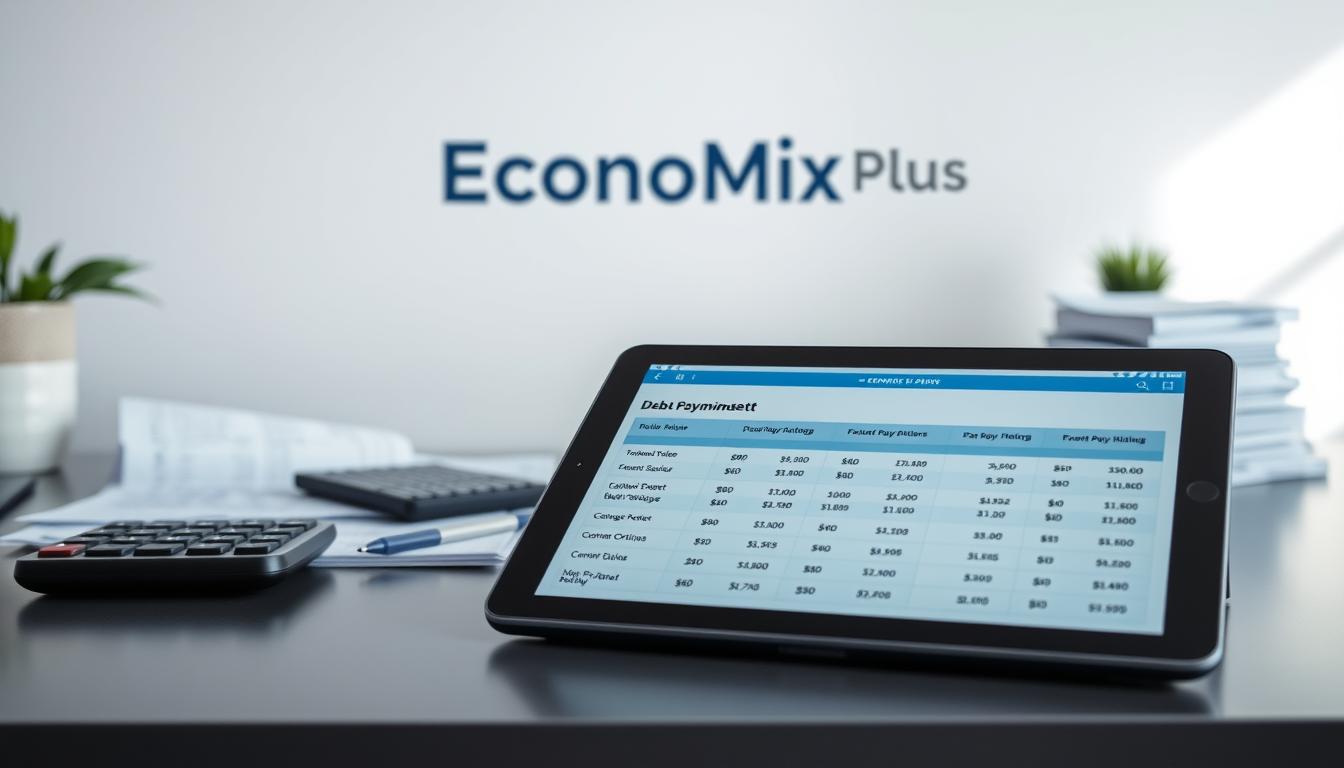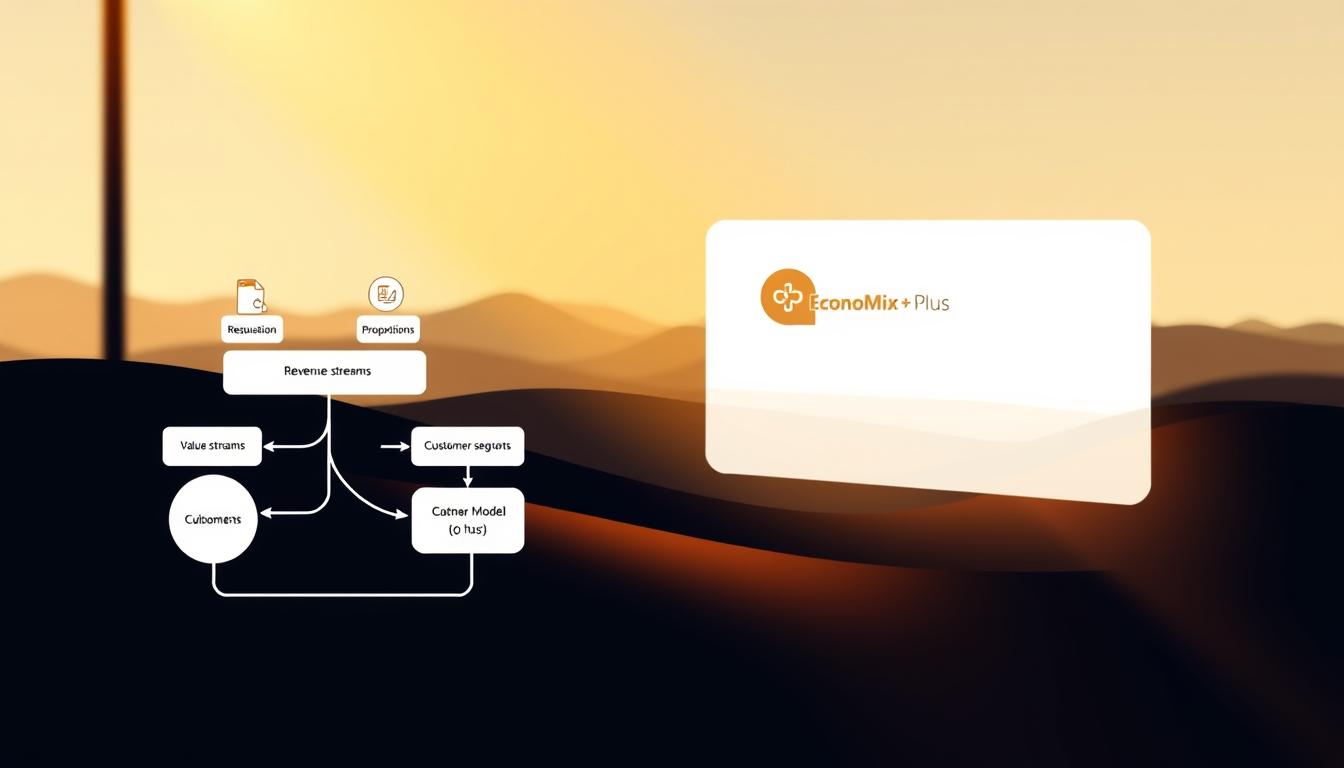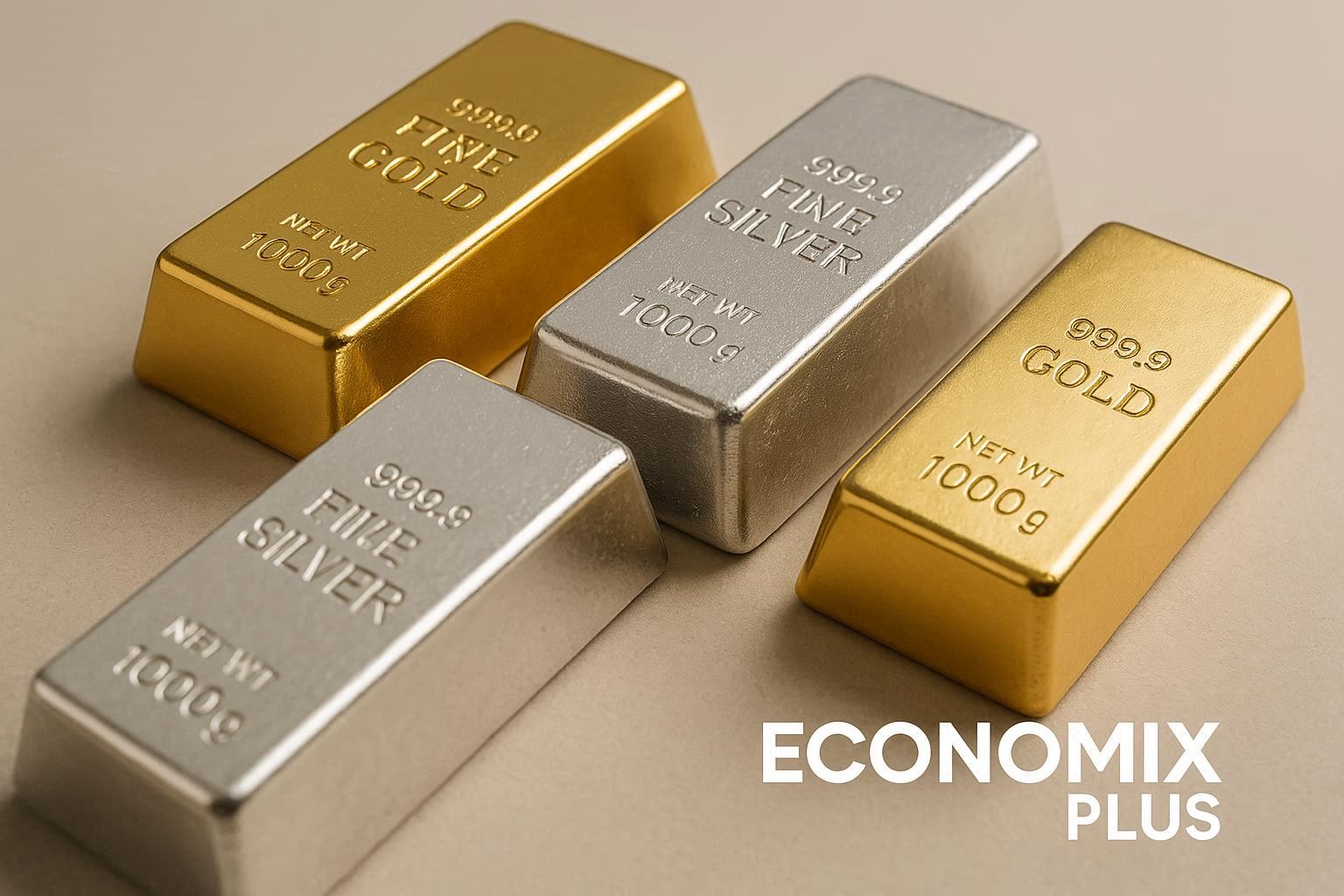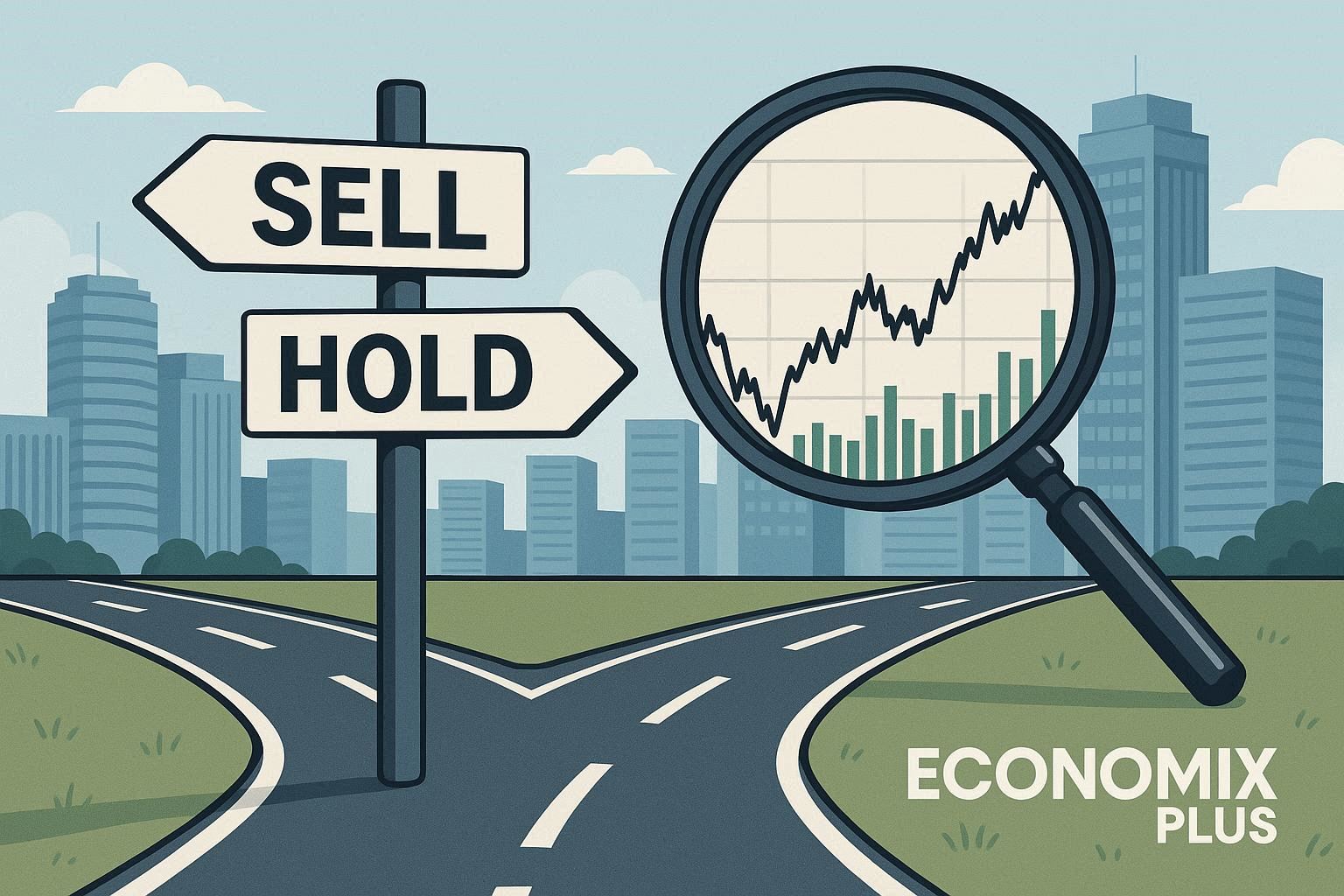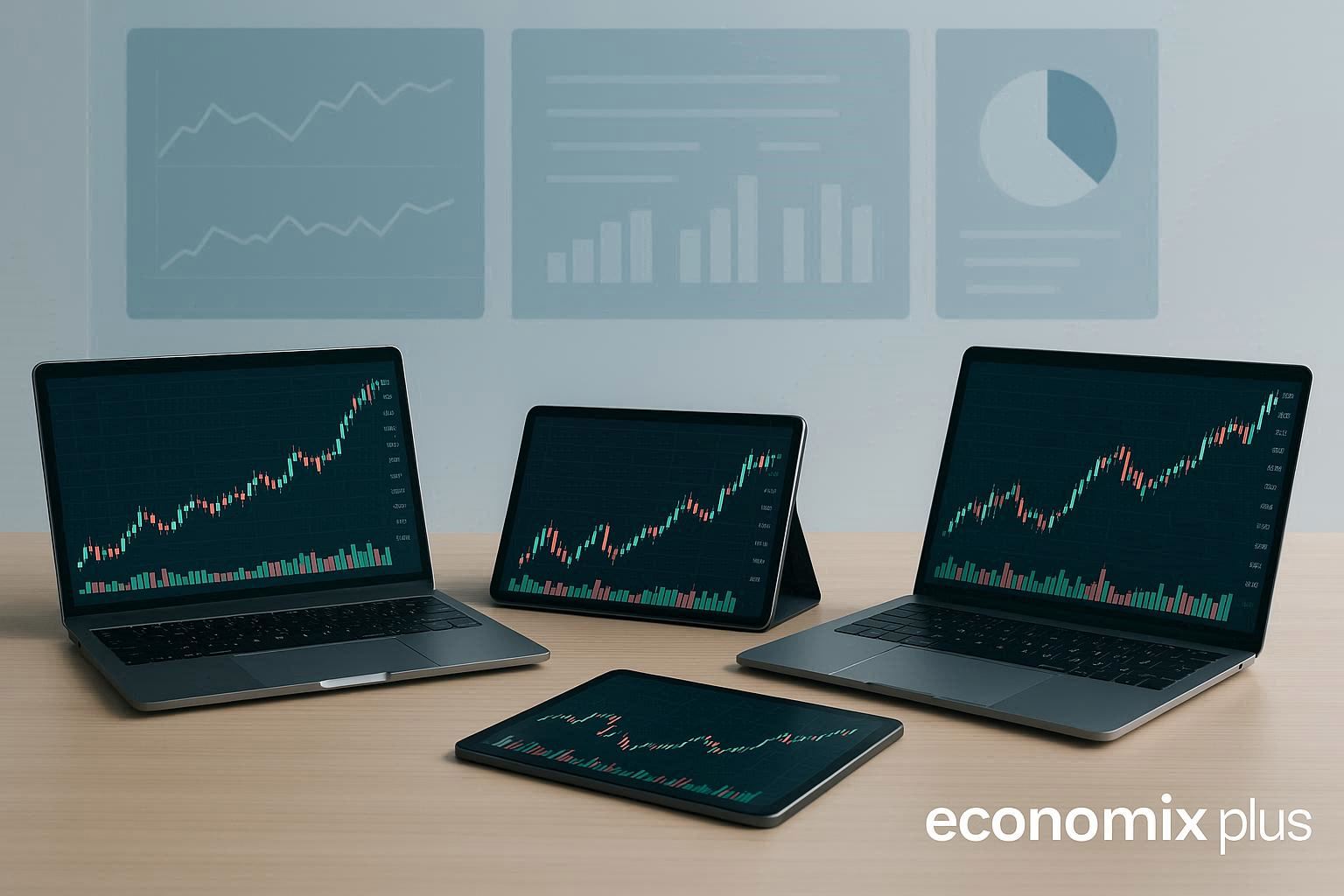Are high-interest bills threatening to spiral out of control? You’re not alone. Many individuals face challenges in managing their debt and finding a suitable plan to become debt-free.
To tackle your debt, you need to understand the scope of the issue. Taking a close look at your financial situation can be daunting, but it’s the first step towards creating a realistic path to financial freedom. By assessing your income and credit obligations, you can develop a tailored approach to eliminate your debt over time.
Understanding your financial standing is crucial in determining the best course of action. This guide will walk you through the process of creating a customized plan to pay off your debt, ensuring that it aligns with your income and financial goals.
Key Takeaways
- Understand the importance of assessing your complete debt picture.
- Learn how to create a realistic path to financial freedom.
- Discover actionable strategies tailored to your income level.
- Find out how to prioritize your debts effectively.
- Develop a sustainable approach to debt elimination.
Understanding Your Current Debt Situation
To tackle your debt effectively, it’s crucial to have a clear picture of your current financial obligations. This involves taking a thorough inventory of your debts and understanding how they impact your overall financial health.
Taking Inventory of All Your Debts
Start by listing all your debts, including credit cards, personal loans, and other financial obligations. This step is essential for understanding the scope of your debt.
Listing Your Total Outstanding Balances
Make a note of the total outstanding balance for each debt. This will give you a clear picture of how much you owe. For instance, you can use a table to organize this information:
| Debt Type | Outstanding Balance | Interest Rate |
|---|---|---|
| Credit Card | $2,000 | 18% |
| Personal Loan | $10,000 | 6% |
Identifying Interest Rates and Minimum Payments
Identify the interest rate and minimum payment for each debt. This information is crucial for determining the best debt repayment strategy. High-interest debts should be prioritized to minimize the amount of interest paid over time.
Categorizing Your Debts
Categorizing your debts helps in understanding the types of debts you have and their implications on your financial situation.
Revolving Debt vs. Installment Loans
Distinguish between revolving debt (like credit cards) and installment loans (like personal loans or mortgages). Revolving debt typically has variable payments and interest rates, while installment loans have fixed payments and terms.
Prioritizing High-Impact Debts
Prioritize debts based on their interest rates and balances. High-interest debts should generally be paid off first, as they cost more in the long run.
Understanding Your Credit Score’s Role
Your credit score plays a significant role in your debt repayment options. A higher credit score can open doors to more favorable debt consolidation options and lower interest rates. Regularly monitoring your credit report allows you to catch errors that might be artificially lowering your score.
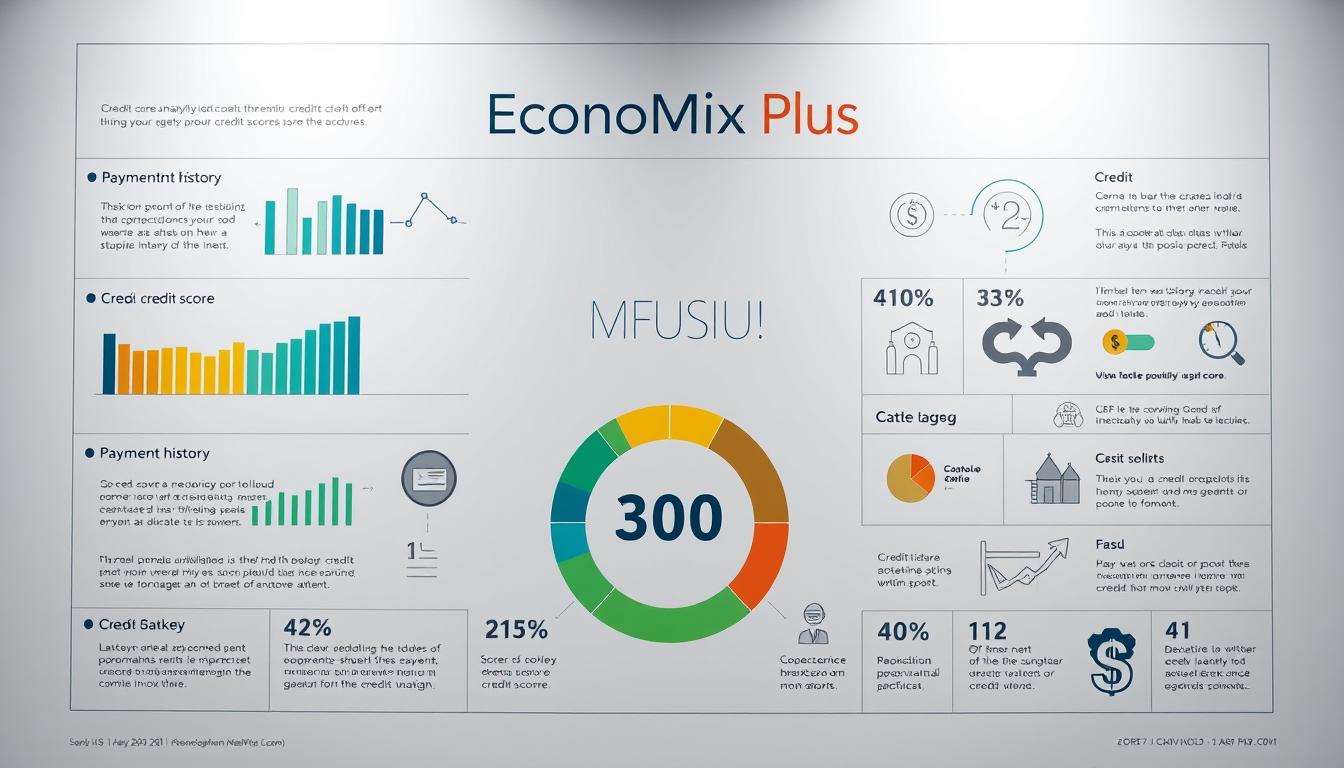
As you pay down debt, your credit score will typically improve, creating a positive cycle that can make subsequent debt repayment easier and less expensive. Understanding the factors that impact your credit score—such as payment history, credit utilization, and length of credit history—helps you make decisions that protect or improve your score during debt repayment.
Assessing Your Income and Creating a Realistic Budget
Before you can tackle your debt, you need to have a clear picture of your income and expenses. This involves understanding how much money you have coming in and where it’s going. By assessing your financial situation, you can create a budget that allows you to make realistic payments toward your debt.
Calculating Your Take-Home Pay
To start, you need to calculate your take-home pay, which is the amount of money you have available after taxes and other deductions. This is the amount that you’ll use to pay your bills and make debt payments. To calculate your take-home pay, review your pay stubs or bank statements to determine your monthly income after taxes.
Identifying Fixed and Variable Expenses
Next, you need to identify your fixed and variable expenses. Fixed expenses are costs that remain the same every month, such as rent or mortgage payments, utility bills, and minimum debt payments. Variable expenses, on the other hand, can change from month to month, such as groceries, entertainment, and travel. By understanding your fixed and variable expenses, you can determine where you can cut back and allocate more money toward debt repayment.
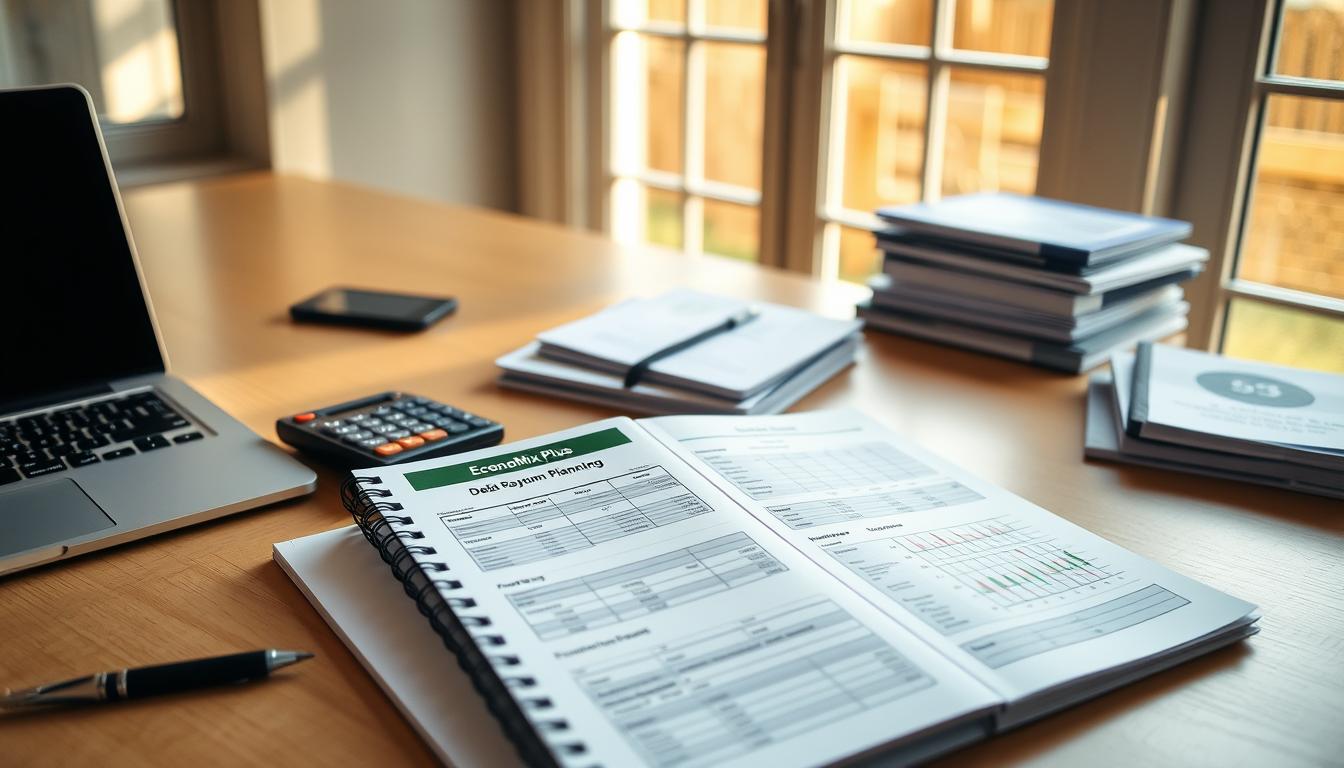
Determining Your Discretionary Income for Debt Repayment
Once you know your take-home pay and expenses, you can determine your discretionary income, which is the amount of money you have available to put toward debt repayment. To calculate your discretionary income, subtract your total fixed and necessary variable expenses from your take-home pay. You can then use this amount to make extra payments on your debt.
- Your discretionary income is the fuel for your debt repayment engine.
- Even small amounts of discretionary income can be used to make significant progress on your debt over time.
- Consider allocating a fixed percentage of your discretionary income toward debt repayment to scale with income fluctuations.
- Look for opportunities to increase your discretionary income by reducing expenses or generating additional income.
By following these steps, you can create a realistic budget that allows you to make progress on your debt and achieve financial freedom.
How to Choose the Best Plan to Pay Off Your Personal Debt Based on Your Income
Your income level plays a crucial role in determining the best strategy to pay off your debt. Understanding how to tailor your debt repayment plan according to your financial situation can make a significant difference in becoming debt-free.
Low-Income Strategies
For individuals with limited income, managing debt can be particularly challenging. However, there are strategies that can help.
Prioritizing Essential Debt Payments
When funds are limited, it’s essential to prioritize debts that have the most significant impact on your financial stability, such as mortgages or car loans. Focusing on essential debt payments ensures that you’re maintaining critical financial commitments.
Finding Extra Income Sources
Exploring additional income sources can provide the extra funds needed to tackle debt. This could involve taking on a part-time job, selling unused items, or offering services on freelance platforms.
Middle-Income Approaches
For those with a moderate income, there’s more flexibility in managing debt. Middle-income earners can consider various strategies to optimize their debt repayment.
Balancing Debt Payoff with Other Financial Goals
It’s crucial to strike a balance between debt repayment and other financial objectives, such as saving for retirement or building an emergency fund. Creating a comprehensive financial plan helps in achieving these multiple goals simultaneously.
Accelerating Payments Through Budget Optimization
By closely examining your budget, you can identify areas where expenses can be reduced, allowing you to allocate more funds towards debt repayment. Optimizing your budget can significantly accelerate your debt payoff.
High-Income Debt Elimination Tactics
High-income individuals have unique advantages and challenges when it comes to debt elimination. Leveraging their financial situation can lead to more effective debt management strategies.
The debt avalanche method, which involves paying off debts with the highest APR first, is particularly effective for high-income earners. This approach can save money in the long run by prioritizing high-interest debts.
| Income Level | Recommended Debt Repayment Strategy | Key Benefits |
|---|---|---|
| Low-Income | Prioritize essential debt payments and seek extra income sources. | Maintains financial stability, generates additional funds for debt. |
| Middle-Income | Balance debt repayment with other financial goals and optimize budget. | Achieves multiple financial objectives, accelerates debt payoff. |
| High-Income | Utilize the debt avalanche method and consider refinancing options. | Saves money on interest, leverages financial situation for better terms. |
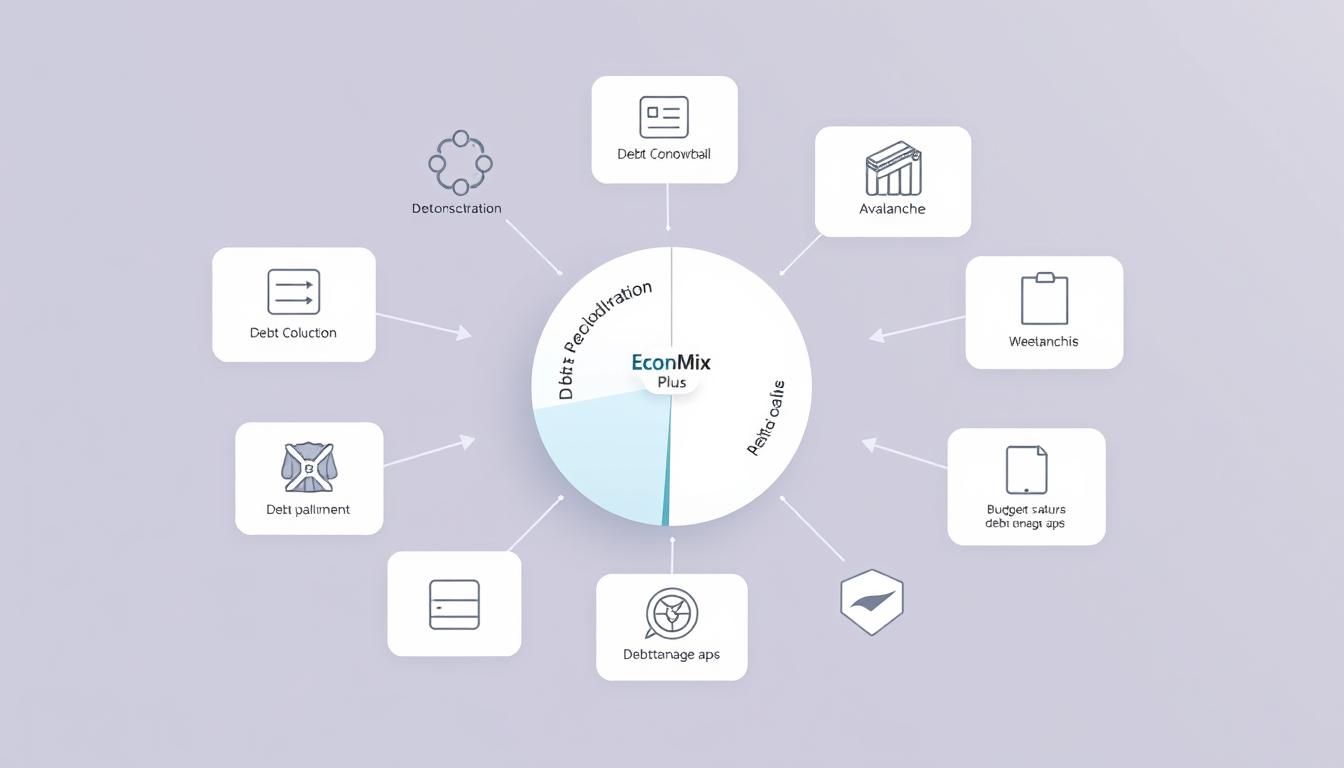
By understanding your income level and applying the appropriate debt repayment strategy, you can effectively manage and eliminate your debt. Whether you’re dealing with high-interest loans or struggling to make ends meet, there’s a tailored approach to suit your financial situation.
The Snowball Method: Building Momentum with Small Wins

For those struggling with multiple debts, the snowball method provides a clear plan to pay off debts one by one, starting with the smallest balance. This approach helps build momentum as you quickly eliminate smaller debts, freeing up more money in your budget to tackle the next debt.
How the Snowball Method Works
The snowball method involves listing all your debts, from smallest to largest. You pay the minimum on all debts except the smallest one, which you pay off as aggressively as possible. Once the smallest debt is paid off, you use that money to attack the next smallest debt, and so on. This method helps you pay debt faster by creating a snowball effect.
Income Considerations for the Snowball Approach
Your income plays a crucial role in how effectively you can implement the snowball method. Those with higher incomes can typically allocate more funds towards debt repayment, accelerating the process. However, individuals with lower incomes can still benefit by adjusting their budget to allocate as much as possible towards their debts.
Real-Life Success Stories
Many have successfully used the snowball method to eliminate their debts. For example, The Lacys paid off $21,000 in credit card debt in less than two years by starting with their smallest balance of $1,200. Such real-world success stories demonstrate the effectiveness of the snowball method in helping people at various income levels become debt-free.
The Avalanche Method: Maximizing Interest Savings

If you’re looking to minimize the amount of interest you pay on your debts, consider using the avalanche method. This approach involves paying off debts with the highest interest rates first, which can lead to significant savings over time.
Understanding the Avalanche Strategy
The avalanche method is a systematic approach to debt repayment that prioritizes debts based on their interest rates. By focusing on the debt with the highest interest rate first, you can reduce the total interest paid across all your debts.
Key benefits of the avalanche method include: reduced total interest paid, faster debt repayment, and the potential for significant savings.
Income Thresholds for Effective Implementation
The effectiveness of the avalanche method can depend on your income level. For individuals with higher incomes, this method can be particularly effective as it allows for more aggressive debt repayment.
However, for those with lower incomes, it may be necessary to adjust the strategy to accommodate budget constraints.
Calculating Your Potential Savings
To understand the potential savings of the avalanche method, you can use online debt repayment calculators. These tools allow you to compare the total interest paid using different debt repayment strategies.
For example, a typical consumer with $15,000 in mixed debt can save hundreds or even thousands in interest by using the avalanche method instead of less optimized approaches.
Understanding your potential savings can provide powerful motivation to stick with your debt repayment plan.
By applying the avalanche method and using tools like debt avalanche calculators, you can maximize your interest savings and achieve your financial goals more efficiently.
Customizing Your Debt Repayment Strategy
Tailoring your debt repayment strategy to your income can lead to more effective debt management. While popular methods like the snowball and avalanche approaches offer structured plans, customizing your strategy can help you stay on track and achieve your financial goals more efficiently.
Hybrid Approaches: Combining Snowball and Avalanche
One way to customize your debt repayment is by combining elements of both the snowball and avalanche methods. For instance, you could start by paying off smaller debts to build momentum, then switch to focusing on debts with higher interest rates. This hybrid approach allows you to benefit from the psychological boost of quick wins while also minimizing the amount of interest paid over time.
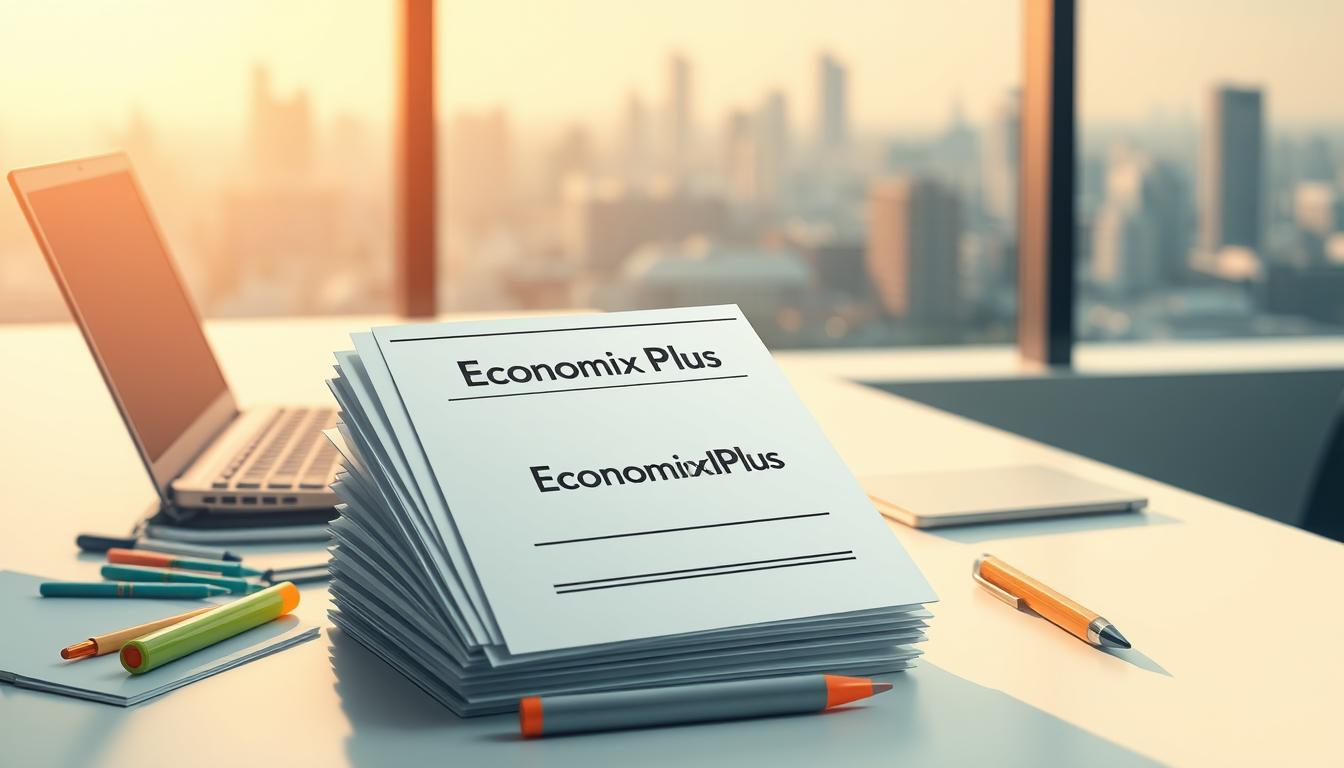
Adjusting Your Strategy Based on Income Fluctuations
Your debt repayment plan should be flexible enough to accommodate changes in your income. If you experience a reduction in income, you may need to adjust your repayment schedule to avoid falling behind on payments. Conversely, if your income increases, you can allocate the extra funds towards your debt, potentially paying it off more quickly. Regularly reviewing your budget and debt repayment progress is crucial for making necessary adjustments.
Creating Accountability Systems
Creating accountability systems is vital for staying on track with your debt repayment plan. This can involve sharing your goals with a trusted friend or family member, scheduling regular “money dates” to review your progress, or using visual tracking methods like debt thermometers or spreadsheets. By setting up a system that works for you, you can maintain motivation and make steady progress towards becoming debt-free.
To further enhance your accountability, consider automating your payments to remove the temptation to skip or delay payments. You can also explore online communities or forums where individuals share their debt repayment journeys, providing support and encouragement along the way.
Debt Consolidation Options for Different Income Levels

Different income levels require different approaches to debt consolidation. Understanding your financial situation and exploring available options can help you make an informed decision.
Personal Loans for Debt Consolidation
For individuals with a stable income, personal loans can be a viable option for debt consolidation. These loans often come with fixed interest rates and fixed repayment terms, making it easier to manage your debt.
Benefits: Simplifies payments, potentially lower interest rates, and fixed repayment terms.
Considerations: Credit score requirements, potential fees, and the need for a stable income.
Balance Transfer Credit Cards
Balance transfer credit cards can be an effective tool for consolidating high-interest credit card debt. By transferring your balances to a single card with a lower or 0% introductory APR, you can save on interest and pay off your debt faster.
Key advantages: Potential for 0% introductory APR, simplifies payments.
Important factors: Balance transfer fees, credit score requirements, and the need to pay off the balance before the introductory period ends.
Debt Management Plans Through Credit Counseling
For those struggling with significant credit card debt, regardless of income level, debt management plans (DMPs) through nonprofit credit counseling agencies can be an excellent option. These programs work by negotiating with your creditors to reduce interest rates and sometimes fees, creating a single monthly payment.
Benefits: Reduced interest rates, simplified payments, and professional guidance.
Considerations: Potential impact on credit score, requirement to close credit card accounts, and monthly fees.
Creating a Sustainable Timeline for Becoming Debt-Free
A sustainable timeline is essential for effectively managing and eliminating debt. To create a realistic plan, you need to assess your financial situation, understand your income, and determine how much you can put toward debt each month.
Setting Realistic Payoff Goals Based on Income
To set achievable goals, you must first calculate your take-home pay and identify your fixed expenses. This will help you determine how much discretionary income you have available for debt repayment. Consider using the 50/30/20 rule as a guideline: 50% for necessities, 30% for discretionary spending, and 20% for saving and debt repayment.
Building Emergency Funds While Paying Off Debt
It’s crucial to have an emergency fund in place while paying off debt. This fund will help you avoid going further into debt when unexpected expenses arise. Aim to save $1,000 or three to six months’ worth of expenses in an easily accessible savings account.
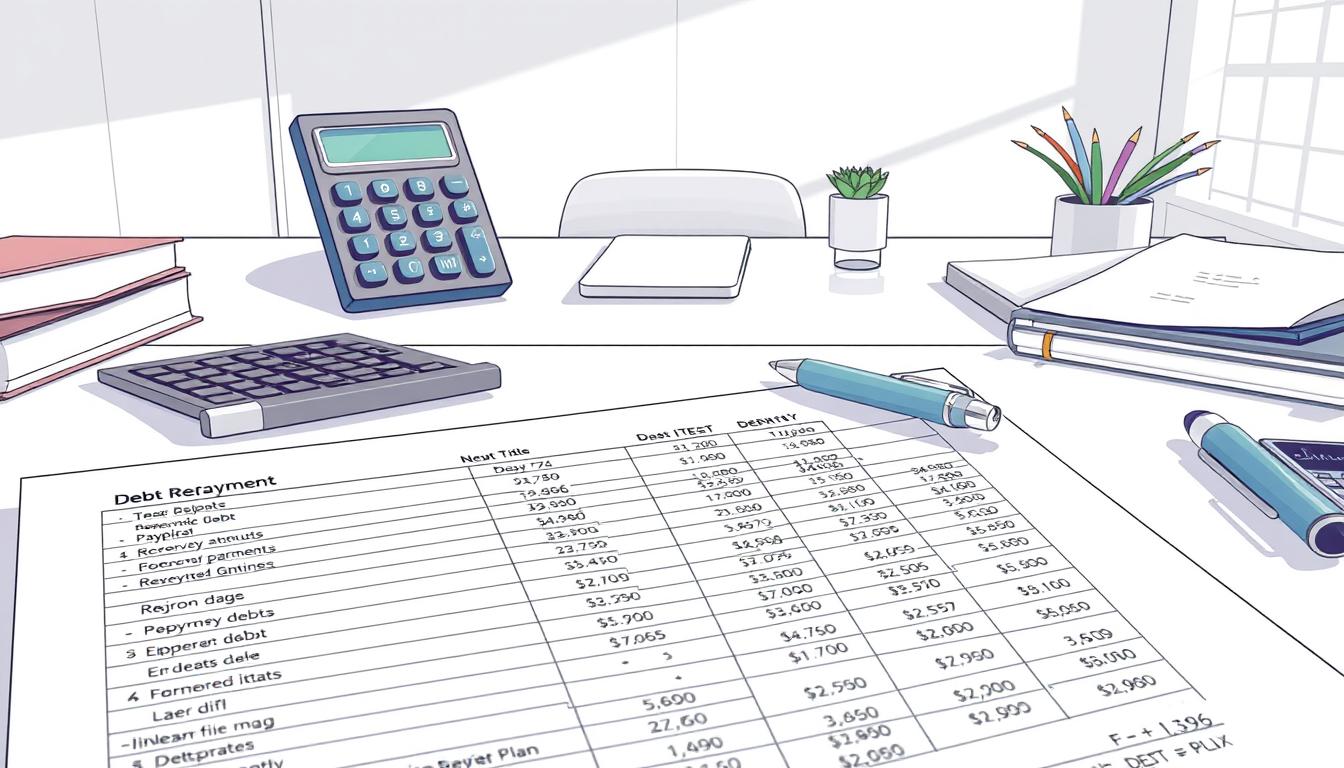
Celebrating Milestones to Stay Motivated
Celebrating your progress is vital to staying motivated on your debt repayment journey. Identify specific milestones, such as paying off individual debts or reaching certain percentage thresholds, and plan budget-friendly rewards. Examples include a home-cooked meal, a day trip to a free attraction, or a small, meaningful purchase. You can also consider non-monetary celebrations like sharing your success with friends or writing a reflection on your progress.
By tracking your progress and celebrating your successes, you’ll be more likely to stay on track and achieve your goal of becoming debt-free. For instance, using a debt repayment app or spreadsheet can help visualize your progress and keep you motivated to pay debt faster.
Conclusion
Becoming debt-free requires a personalized approach that considers your income, expenses, and financial motivations. Choosing the right debt repayment plan is a highly individualized process that demands an honest assessment of both your financial situation and psychological motivators.
Your income level provides the framework for your debt repayment approach, but factors like interest rates, debt types, and your personal motivation style are equally important considerations. You may need to adapt your strategy as your income changes or as you learn more about what keeps you motivated in your debt repayment journey.
Regularly monitoring your credit score throughout your debt repayment process can open doors to better refinancing options, accelerating your progress toward debt freedom. Consider seeking professional guidance from nonprofit credit counselors if you’re struggling to create a workable plan on your own.
Remember, becoming debt-free is not just about the financial benefits—it’s about creating peace of mind and expanding your future options. Stay focused on your “why”—the compelling personal reasons that motivated you to pursue debt freedom in the first place.
FAQ
What’s the difference between the snowball and avalanche methods for paying off debt?
How does my credit score affect my debt repayment plan?
Can I use a balance transfer credit card to pay off my debt?
What’s the role of discretionary income in debt repayment?
How often should I review and adjust my debt repayment strategy?
Can I pay off debt with a low income?
What’s the benefit of building an emergency fund while paying off debt?
FAQ
What’s the difference between the snowball and avalanche methods for paying off debt?
The snowball method involves paying off debts with the smallest balances first, while the avalanche method prioritizes debts with the highest interest rates. Both strategies have their advantages, and the best approach depends on your financial situation and personal preferences.
How does my credit score affect my debt repayment plan?
Your credit score can impact your ability to secure loans or credit cards with favorable interest rates, which can, in turn, affect your debt repayment strategy. A good credit score can provide more options for debt consolidation and balance transfer credit cards.
Can I use a balance transfer credit card to pay off my debt?
Yes, balance transfer credit cards can be a useful tool for paying off debt, especially if you can secure a 0% interest rate promotion. However, be aware of the balance transfer fees and the regular APR that will apply after the promotional period ends.
What’s the role of discretionary income in debt repayment?
Discretionary income is the amount of money you have available for debt repayment after covering your essential expenses. Understanding your discretionary income is crucial for creating a realistic budget and debt repayment plan.
How often should I review and adjust my debt repayment strategy?
It’s a good idea to review your debt repayment strategy regularly, ideally every few months, to ensure you’re on track to meet your goals. You may need to adjust your strategy if your income or expenses change.
Can I pay off debt with a low income?
Yes, it’s possible to pay off debt with a low income, but it may require more time and discipline. Consider debt management plans, credit counseling, or government assistance programs if you’re struggling to make ends meet.
What’s the benefit of building an emergency fund while paying off debt?
Building an emergency fund can help you avoid going further into debt when unexpected expenses arise. Aim to save
FAQ
What’s the difference between the snowball and avalanche methods for paying off debt?
The snowball method involves paying off debts with the smallest balances first, while the avalanche method prioritizes debts with the highest interest rates. Both strategies have their advantages, and the best approach depends on your financial situation and personal preferences.
How does my credit score affect my debt repayment plan?
Your credit score can impact your ability to secure loans or credit cards with favorable interest rates, which can, in turn, affect your debt repayment strategy. A good credit score can provide more options for debt consolidation and balance transfer credit cards.
Can I use a balance transfer credit card to pay off my debt?
Yes, balance transfer credit cards can be a useful tool for paying off debt, especially if you can secure a 0% interest rate promotion. However, be aware of the balance transfer fees and the regular APR that will apply after the promotional period ends.
What’s the role of discretionary income in debt repayment?
Discretionary income is the amount of money you have available for debt repayment after covering your essential expenses. Understanding your discretionary income is crucial for creating a realistic budget and debt repayment plan.
How often should I review and adjust my debt repayment strategy?
It’s a good idea to review your debt repayment strategy regularly, ideally every few months, to ensure you’re on track to meet your goals. You may need to adjust your strategy if your income or expenses change.
Can I pay off debt with a low income?
Yes, it’s possible to pay off debt with a low income, but it may require more time and discipline. Consider debt management plans, credit counseling, or government assistance programs if you’re struggling to make ends meet.
What’s the benefit of building an emergency fund while paying off debt?
Building an emergency fund can help you avoid going further into debt when unexpected expenses arise. Aim to save $1,000 or three to six months’ worth of living expenses to cover essential costs.
How can I stay motivated during the debt repayment process?
Celebrating milestones, such as paying off individual debts or reaching certain milestones, can help you stay motivated. You can also consider enlisting the support of a financial advisor or joining a debt support group.
,000 or three to six months’ worth of living expenses to cover essential costs.
How can I stay motivated during the debt repayment process?
Celebrating milestones, such as paying off individual debts or reaching certain milestones, can help you stay motivated. You can also consider enlisting the support of a financial advisor or joining a debt support group.
